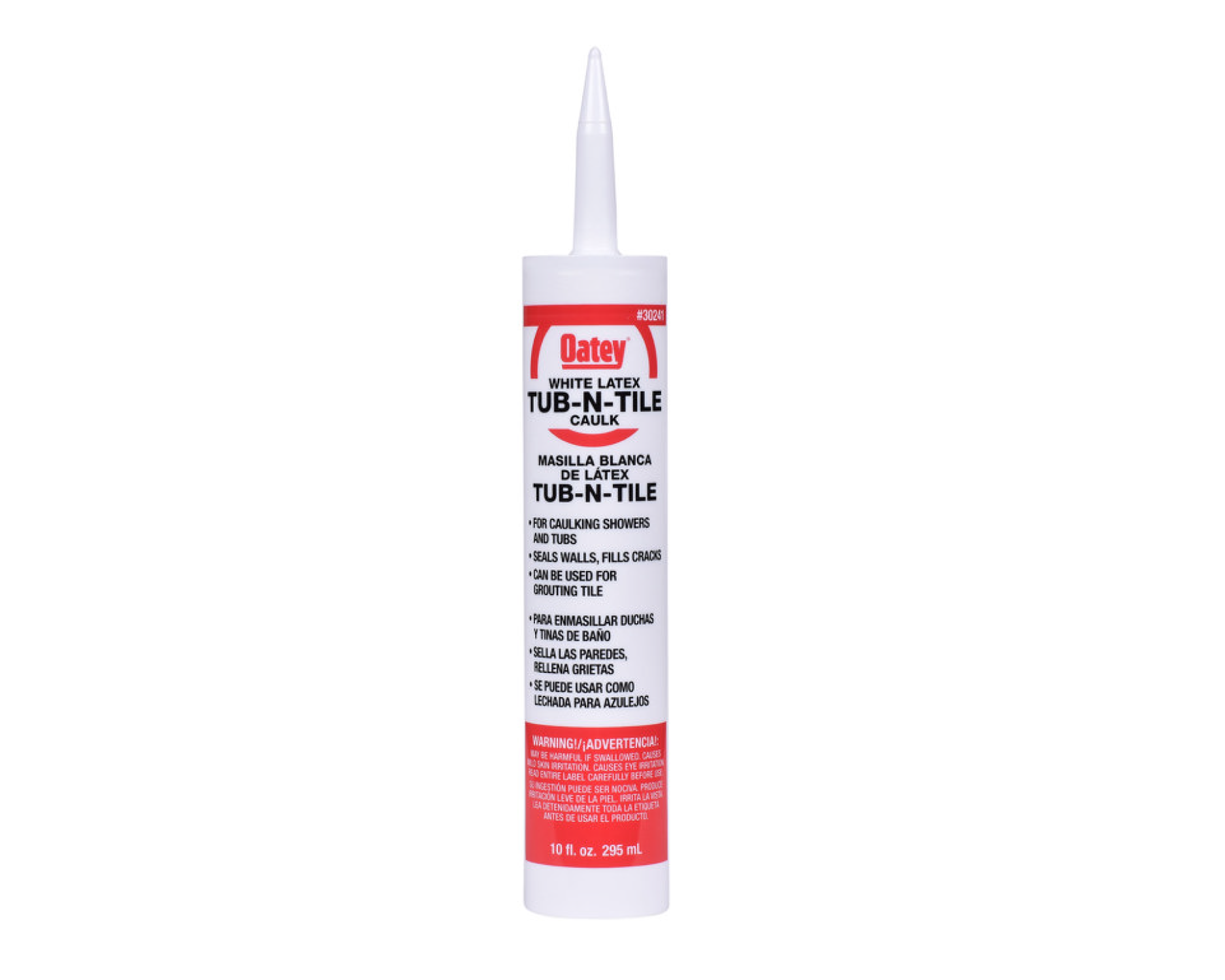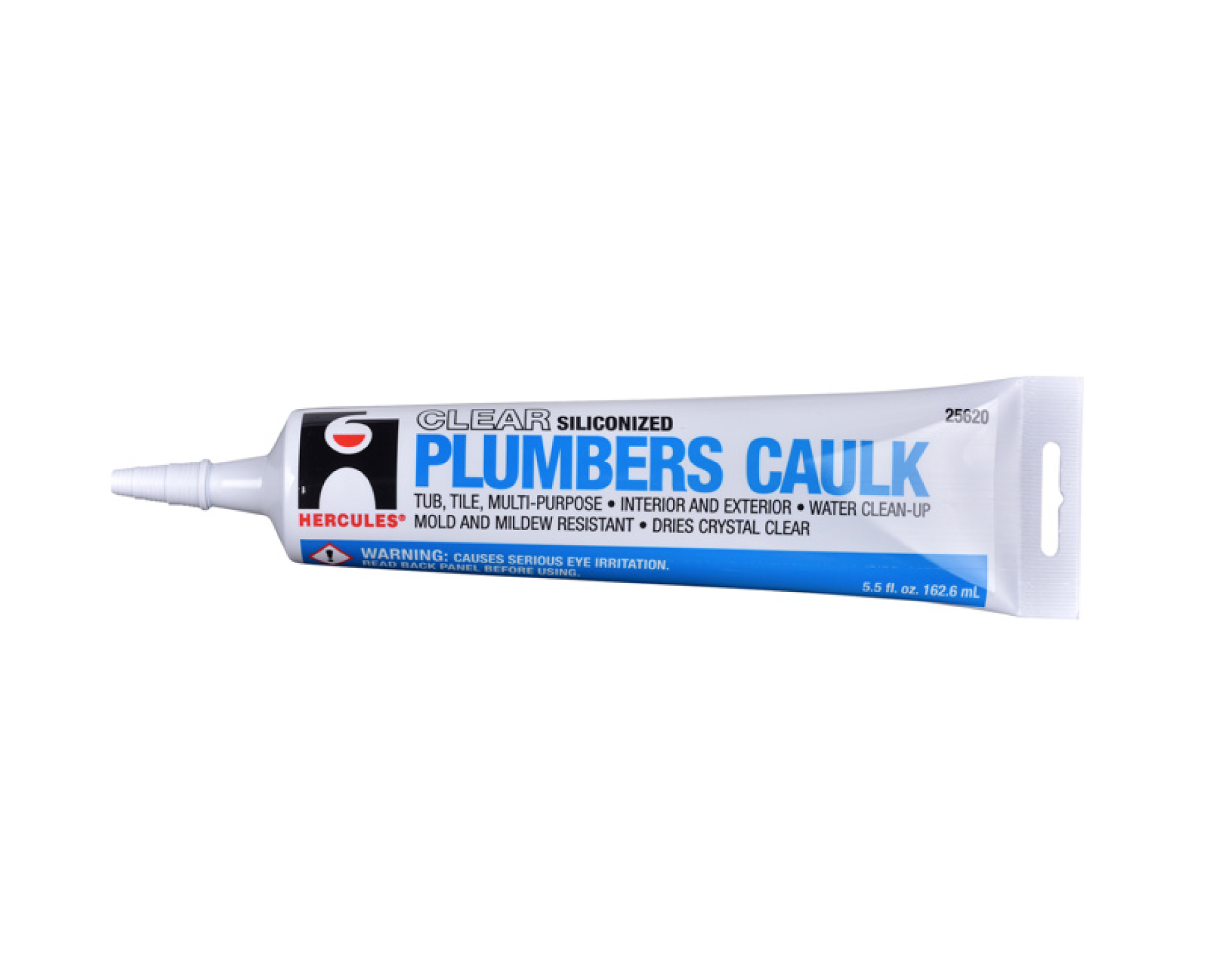The right bathroom caulk or sealant can make all the difference in making your bathroom watertight. From preventing water migration to stopping mold growth, choosing the best sealant can protect your bathroom for years.
With an abundance of waterproof bathroom caulks and common types of sealants on the market, it’s not uncommon to feel overwhelmed when choosing the right product for your next bathroom project. Understanding what separates bathroom caulk vs sealant is a great place to start.
- are primarily designed to create a waterproof barrier, making them essential in areas like bathrooms where water exposure is common.
- Caulks can serve various purposes, such as sealing air leaks or filling gaps to prevent pests from entering.
However, the primary goal in bathrooms remains to keep moisture at bay.
Oatey Tip: The two most important factors to keep in mind when selecting a caulk or sealant are the application site’s temperature range and moisture level.
Let’s explore the unique properties and benefits of some of the most common caulks and bathroom sealants to ensure you find the best fit for your project.
What are the Types of Bathroom Sealants or Caulks?
1. Acrylic latex caulks
Acrylic-latex caulk, also known as latex or general-purpose caulk, is water-based and provides excellent adhesion for bathroom materials such as tile. Unlike a silicone sealant, it is paintable once cured, produces fewer fumes, and can be cleaned with mild soap and water rather than a chemical solvent. This caulk type is also easier to apply and is ideal for hard-to-reach and time-sensitive applications.
Typical bathroom applications for regular and specialty acrylic-latex caulk include:
- Securing loose tiles
- Caulking bathtubs, showers, sinks, and toilets
- Sealing crown molding and baseboards
- Sealing gaps around plumbing fixtures
Acrylic-latex caulks to consider:
- Oatey® Tub-N-Tile Caulk: This is a white, flexible, latex general-purpose sealant to fill and seal cracks and joints for caulking around tubs, showers, lavatories, and sinks. The caulk can also be used to reset loose tiles. Once fully cured, the product can be painted with an oil base or latex paint. Tub-N-Tile also includes an advanced mildewcide, defending against mildew growth in damp areas, and it cleans up easily with soap and water.
- Oatey® Tub-N-Tile Ultra Clear Caulk: This flexible, general-purpose waterproof bathroom caulk provides excellent adhesion to most common building materials and can be used for sink and countertop installation, replacing broken ceramic tiles and fixtures, sealing ducts, and exterior air conditioning lines. The product applies white and dries clear in two weeks or less, depending on temperature, humidity, and bead size.

2. Siliconized acrylic latex - hybrid caulk
If you’re looking to combine the strong sealing properties of a silicone sealant and the ease of application and cleanup that an acrylic-latex bathroom caulk offers, opt for a siliconized acrylic-latex caulk. This hybrid caulk provides a waterproof seal that will not crumble or shrink when temperature changes occur, making it flexible and durable. It is also made to dry quickly (only 24 hours) and glides smoothly on surfaces for frustration-free shaping and blending.
Typical bathroom applications for regular and specialty hybrid caulk include:
- Bathtub and shower surrounds
- Backsplashes.
- Sealing exterior siding
- Reducing window and door drafts
Hybrid caulks to consider:
- Hercules® Plumbers Caulk™: This commercial-grade, easy-to-use, single-component, non-sag, siliconized acrylic-latex caulk forms a flexible, durable, and UV-resistant (ultraviolet) waterproof seal on interior and exterior surfaces. It flows easily and doesn't crumble or harden in the tube or cartridge. It also resists shrinkage and becomes tack-free in one hour.
- Harvey™ Siliconized Acrylic Caulk: A water-based acrylic bathroom caulk with silicone for added adhesion and low-temperature flexibility, it is tack-free in 30 minutes and paintable in two hours with latex or oil-based paints.
If you plan on using a caulk around a toilet base, follow this guide for step-by-step instructions.

3. 100%-silicone sealant
This 100%-silicone sealant contains antimicrobial properties that inhibit the growth of mold and mildew. Due to its strong adhesiveness, elasticity, and waterproof barrier properties, silicone sealant is an excellent choice for bath applications. UV-resistant to protect against yellowing, this sealant lasts longer when exposed to direct sunlight. It is also fast-drying, fully curing within 24 hours.
Typical bathroom applications for 100% silicone:
- Sealing top-mount and under-mount sinks to countertops
- Bathtub/shower surrounds, doors, and drains
100%-silicone sealant to consider:
- Oatey® Silicone Sealant is a mildew-resistant silicone sealant that can be used on ceramic tiles, tubs, showers, rimless sinks, and plumbing fixtures. This high-performing sealant is resistant to weathering, ozone, UV radiation and thaw/freeze conditions.
Oatey Tip: Read manufacturer instructions and product recommendations to ensure best practices for safe and effective use.
Choosing the best bathroom caulk or sealant ensures a watertight and durable finish. Understanding the differences between sealant types and selecting the right product for your needs will prevent water damage and maintain a pristine bathroom environment.